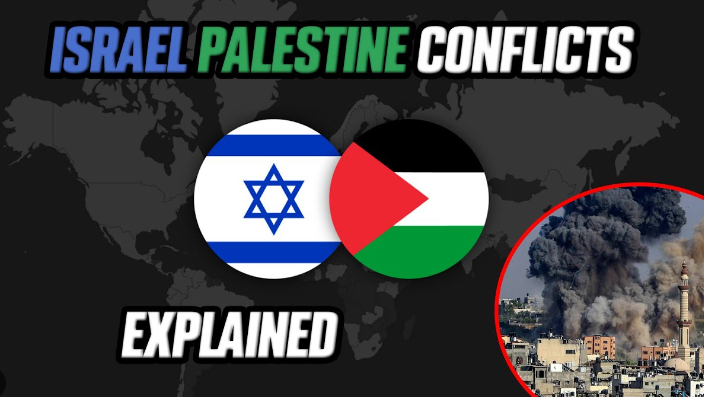In the ever-evolving landscape of the Middle East, the Israel-Palestine conflict has once again captured global attention in 2023. The intricacies of this longstanding dispute have given rise to a myriad of opinions, emotions, and geopolitical considerations. In this blog, we aim to provide a comprehensive overview of the current situation, delving into the historical context, recent events, and the complex web of factors contributing to the ongoing tensions.
Understanding the Historical Context:
To truly grasp the depth of the Israel-Palestine conflict, one must trace its roots back to the mid-20th century. The establishment of the State of Israel in 1948 marked a turning point, triggering displacement and resentment among Palestinian Arabs. The partition plan led to the displacement of hundreds of thousands of Palestinians, creating a refugee crisis that has persisted for generations. Over the years, a series of wars, territorial disputes, and peace processes have shaped the narrative, with Jerusalem standing as a symbolic and contentious focal point.
Recent Developments:
As of 2023, the conflict has once again escalated, with both Israeli and Palestinian territories experiencing heightened tensions. The triggering events leading to the latest wave of violence are varied and complex, ranging from disputes over land and settlements to religious and cultural differences. The world watches as civilians on both sides bear the brunt of the conflict, with human rights concerns taking center stage.
The Israeli-Palestinian conflict is deeply rooted in competing national narratives, territorial claims, and historical grievances. The unresolved status of Jerusalem, claimed as a capital by both Israelis and Palestinians, remains a major stumbling block. Settlement construction in the West Bank, the blockade on Gaza, and the status of refugees further contribute to the complexity of the situation.
International Responses and Mediation:
The international community has not remained silent in the face of this renewed conflict. Nations around the world have expressed concern and called for a peaceful resolution. International organizations, including the United Nations, have sought to mediate and facilitate dialogue between the conflicting parties. The delicate balance of diplomatic relations and the geopolitical implications further complicate the situation, with various global powers exerting influence.
Regional dynamics play a crucial role, with neighboring countries often taking sides based on historical alliances and geopolitical interests. The involvement of external actors, such as the United States, Russia, and European nations, adds another layer of complexity. The United States, historically a key ally of Israel, plays a significant role in the region’s dynamics, and its approach greatly influences the prospects for peace.
Humanitarian Concerns:
The toll on civilians in the region is immeasurable, with reports of casualties, displacement, and infrastructural damage emerging daily. Humanitarian organizations are actively working to provide aid and support to those affected, navigating the complexities of delivering assistance in conflict zones. The impact on mental health and the trauma experienced by children caught in the crossfire underscore the urgent need for a lasting solution.
The blockade on Gaza has exacerbated humanitarian concerns, leading to severe shortages of basic necessities and hindering economic development. Access to healthcare and education is compromised, further deepening the suffering of the population. The international community faces the challenge of addressing immediate humanitarian needs while working towards a sustainable political resolution.
Social Media and the Global Narrative:
In the age of information, social media plays a pivotal role in shaping public opinion and awareness. The Israel-Palestine conflict is no exception, with images, videos, and narratives disseminating rapidly across platforms. The influence of digital activism, advocacy, and misinformation further adds layers of complexity to an already intricate situation.
Social media platforms serve as a battleground for competing narratives, with users expressing solidarity, sharing personal stories, and engaging in advocacy efforts. However, the echo chambers created by algorithmic sorting can also contribute to polarization and the spread of misinformation. Navigating through the noise to discern reliable information becomes crucial in understanding the nuances of the conflict.
Prospects for Peace:
Despite the challenges, there are glimpses of hope for a peaceful resolution. Grassroots movements, peace-building initiatives, and the resilience of communities on both sides demonstrate the potential for reconciliation. International efforts to broker ceasefires and initiate dialogue persist, emphasizing the need for compromise, empathy, and a commitment to shared prosperity.
The two-state solution, envisioning separate Israeli and Palestinian states coexisting side by side, has been a longstanding goal, but achieving it requires addressing complex issues such as borders, refugees, and the status of Jerusalem. Alternative approaches, such as a confederation or a binational state, are also considered by various actors.
Conclusion:
As the Israel-Palestine conflict continues to unfold in 2023, it remains a multifaceted challenge that demands global attention and concerted efforts for a just and lasting resolution. Understanding the historical context, recent developments, international responses, humanitarian concerns, and the influence of social media provides a holistic perspective on the complexities at play. While obstacles abound, the pursuit of peace remains paramount, with the hope that collective efforts will pave the way for a more stable and harmonious future in the region. The path to resolution is arduous, but the urgency of finding common ground and fostering mutual understanding has never been more apparent.




